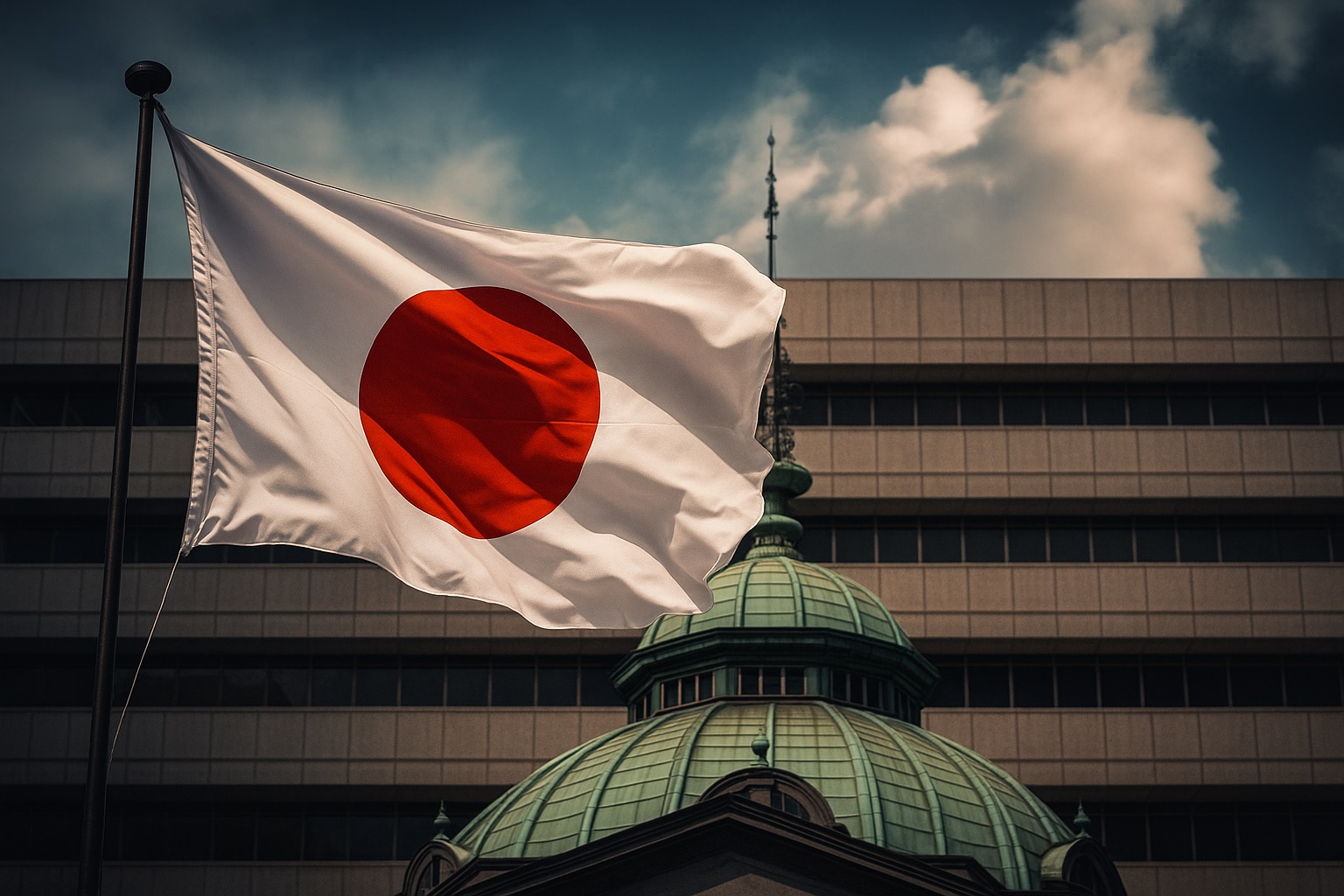The Bank of Japan’s latest “Summary of Opinions,” released Monday, signals the central bank is edging toward another rate increase as soon as December, while a top economic adviser to new Prime Minister Sanae Takaichi publicly urged caution and argued for waiting until January. [1]
Key takeaways
- Conditions “almost met” for the next hike. Several BOJ policymakers said the bar for a further step toward rate normalization has “almost been met,” though they still want confirmation that underlying inflation is entrenched.
- Supportive conditions even after a move. The summary notes financial conditions should remain accommodative even after the next policy rate hike, a message consistent with market expectations for a measured path.
- December vs. January debate. Takuji Aida—Credit Agricole’s chief Japan economist and a close adviser to PM Takaichi—told Nikkei the BOJ should avoid a December hike and consider moving in January instead, citing a fragile economy. [2]
- What markets expect. Roughly half of BOJ watchers now expect a December increase and nearly all see a move by January. [3]
What the BOJ said today
The Summary of Opinions from the Oct. 29–30 policy meeting (released at 8:50 a.m. JST on Nov. 10) paints a more hawkish picture than earlier in the year. Board members said the “conditions for taking a further step toward the normalization of the policy interest rate have almost been met,” while emphasizing the need to check how firmly underlying inflation is taking hold. They also stressed that accommodative financial conditions would persist even after the next hike, and that confirmation of continued wage-setting momentum—especially early signals heading into spring wage talks—could tip the balance toward action. [4]
The board will continue monitoring three swing factors closely: global trade policy and growth, the direction of U.S. monetary policy and exchange rates, and Japan’s wages and prices. Several members said the Bank must not miss the timing for a hike even if immediate action isn’t strictly necessary.
Where policy stands—and how we got here
At the October meeting, the BOJ held its short-term policy rate at around 0.5% by a 7–2 vote, with two board members pushing for a 0.75% hike—continuing dissent that first surfaced in September. Governor Kazuo Ueda said after the decision that he wanted a bit more data, particularly on wage durability.
The next monetary policy meeting is scheduled for Dec. 18–19, placing today’s hawkish tilt squarely in the run‑up to that decision.
What markets and economists are pricing
A growing chorus of analysts sees December or January as the most likely windows for the next 25bp move. A Bloomberg roundup notes about half expect December and ~98% expect a hike by January—aligned with the BOJ’s own assessment that the threshold is close. The Wall Street Journal likewise reported the summary “shows next rate-hike nearing.” [5]
In currencies, the yen hovered around ¥154 per dollar on Monday as broader risk sentiment improved; traders also digested the BOJ’s summary, which some see as paving the way for a near‑term move.
The counterargument: “Don’t hike in December”
Cutting across the hawkish hints, Takuji Aida, newly tapped to join a flagship government panel under PM Takaichi, warned it would be “quite risky” to lift rates in December given signs of third‑quarter contraction and the government’s push for large‑scale spending to cushion households. Aida said January would be more feasible, and projected that if fiscal stimulus supports growth, the BOJ could later raise rates gradually—potentially once per quarter—toward 2% by 2028. [6]
The political backdrop matters: Takaichi has signaled a more flexible multi‑year fiscal target to prioritize growth, a stance that intersects with the BOJ’s timing calculus. [7]
Why this matters beyond Japan
- Global rates and FX: A December hike would narrow interest‑rate differentials at the margin, potentially easing pressure on the yen and feeding through to global FX carry trades. Markets will watch how far the BOJ guides toward a more “neutral” setting next year—something several board members raised as prudent to reduce the risk of sharper moves later.
- Wages > everything: Policymakers repeatedly flagged wage behavior as the decisive variable. Early indications into the 2026 “shuntō” wage talks will be crucial for whether the BOJ treats inflation as durable enough to justify a quicker cadence of hikes. [8]
- Two dissenters keep pressure on: Continued dissent for a 0.75% rate underscores that the board’s center of gravity has shifted from emergency support to normalization, even as Ueda proceeds carefully.
What to watch next
- December 18–19 MPM: Guidance on the path to neutral and any change in balance‑of‑risks language.
- Wage signals: Early corporate moves ahead of spring wage negotiations; the summary says confirmation of “active wage‑setting behavior” could “lead to a policy change.”
- Inflation mix: With food‑price effects fading unevenly, the board wants firmer evidence that underlying inflation is entrenched near 2%. [9]
- Yen and global risks: A sharp yen move or negative global news could sway timing even if the baseline for a hike is nearly met.
The bottom line
The BOJ’s own words now place the Bank on the doorstep of its second hike of 2025. Whether it walks through in December or waits for January will likely hinge on two things: convincing signs that wage‑driven inflation is sticky—and an absence of fresh shocks that would argue for patience. For investors, that keeps Japan’s late‑cycle normalization very much a live, data‑dependent story. [10]
Sources: Bank of Japan Summary of Opinions (Oct. 29–30, released Nov. 10); Oct. 30 Statement on Monetary Policy; Bloomberg, Reuters, Wall Street Journal reporting on Nov. 10; BOJ meeting calendar. [11]
References
1. www.boj.or.jp, 2. www.reuters.com, 3. www.bloomberg.com, 4. www.boj.or.jp, 5. www.bloomberg.com, 6. www.reuters.com, 7. www.reuters.com, 8. www.boj.or.jp, 9. www.boj.or.jp, 10. www.boj.or.jp, 11. www.boj.or.jp










